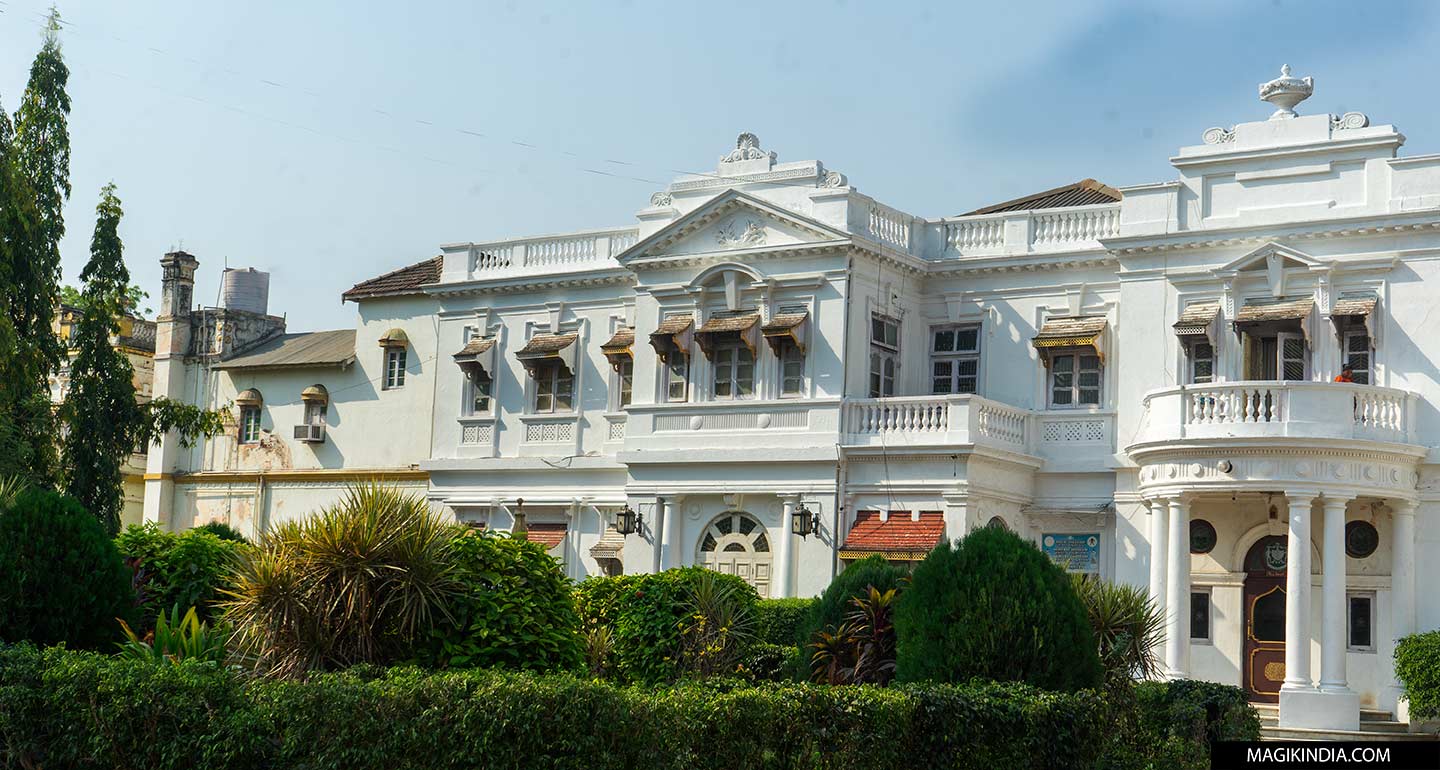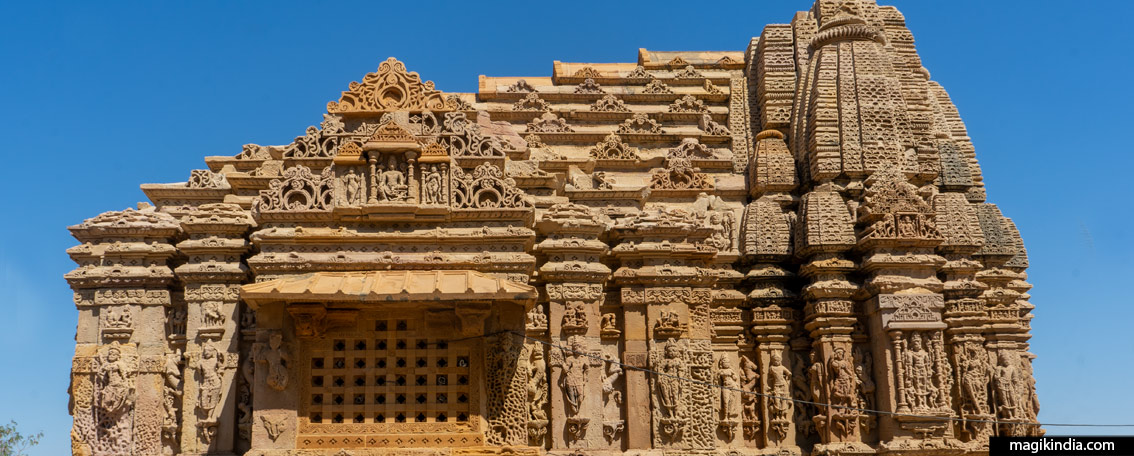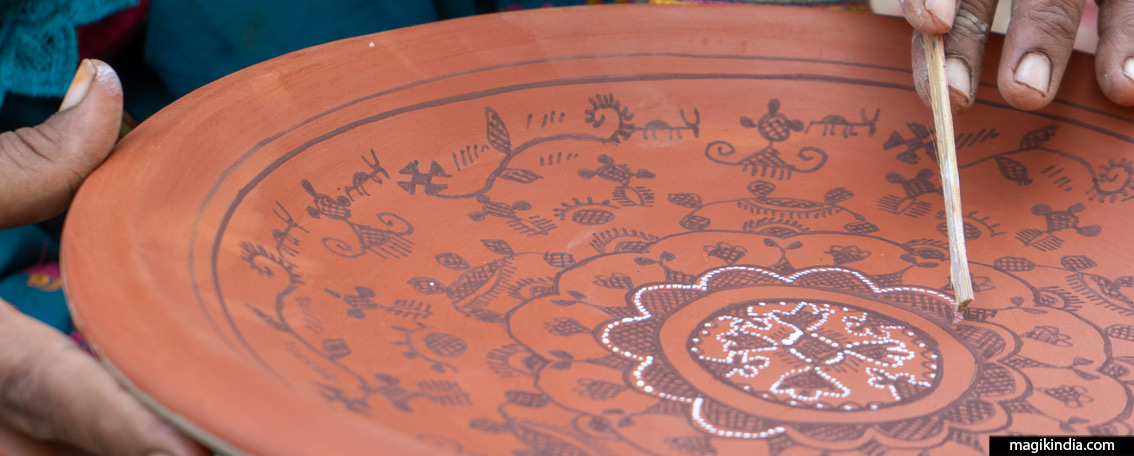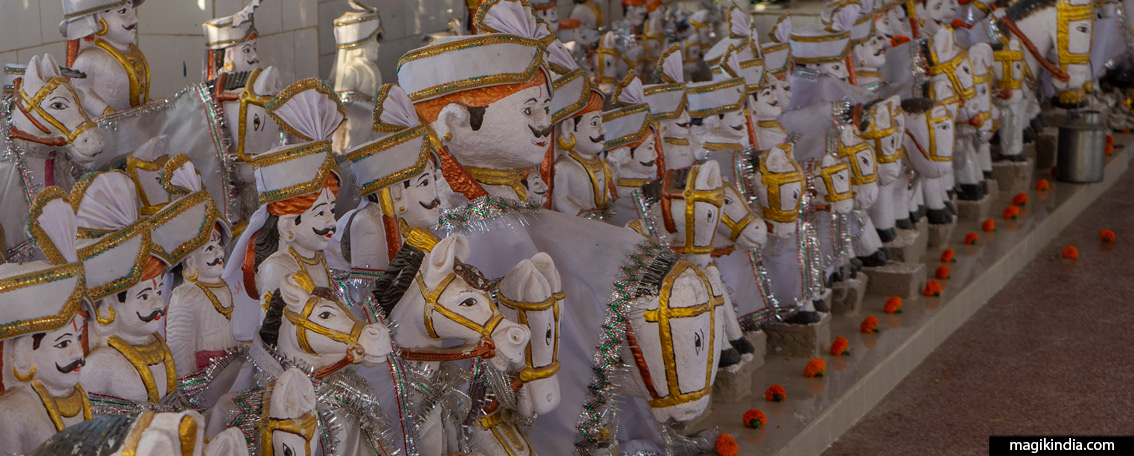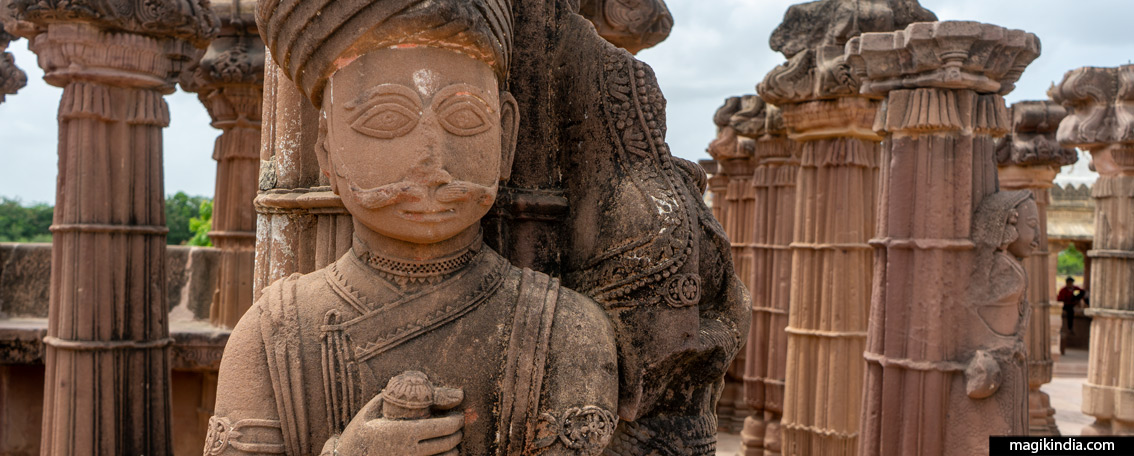
Tera, one of the “Moti Panchtirthi” of Kutch
Tera is one of the oldest villages of Gujarat, located in the Abdasa region of Kutch. Although the town only has a few inhabitants now, it was nevertheless, in the 18th century, one of the major strongholds of the Jadeja lords. Its fort, with its powerful ramparts, bears witness to its former splendor. But Tera is best known as a land of pilgrimage; its Jain derasar, one of the “moti panchtirthi” brings together tens of thousands of devotees each year.
Normally, one enters Tera through its large square nestled around a century-old banyan tree, the main meeting place for the villagers. Our driver having gotten somewhat lost in the labyrinthine streets of the village, we will never see this friendly place. Instead, we head directly north of Tera along the ramparts of its historic fort.
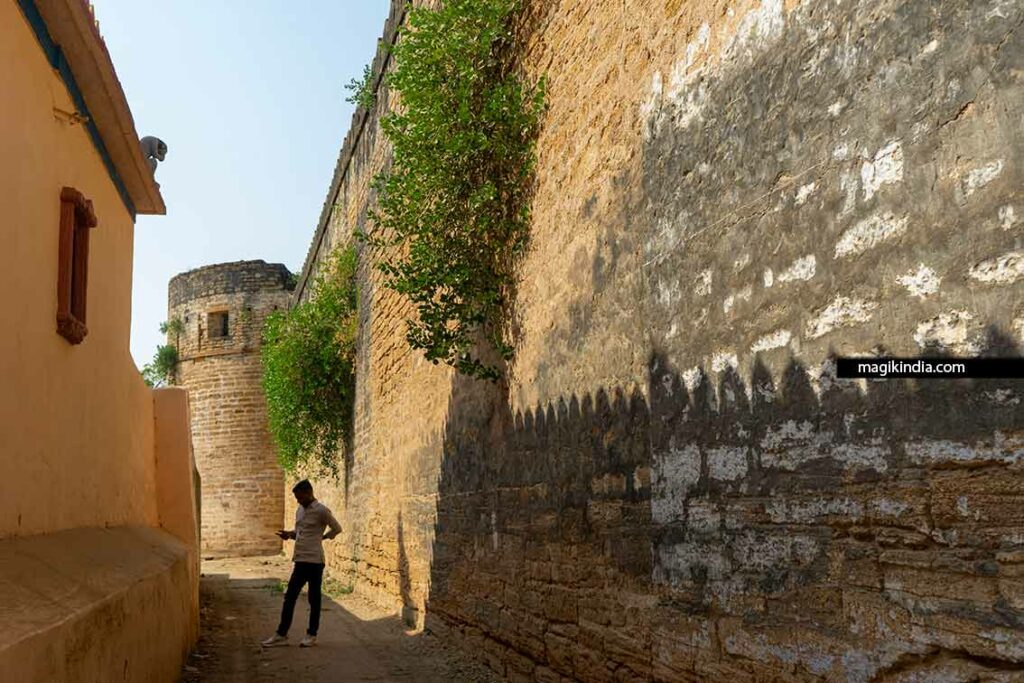
At one point, the road stops, we have to get out of the car and continue on foot. We don’t know where we are going, but the adventure turns out to be delicious in the end: the village is dotted with old havelis with jagged sculptures and cracked wooden doors. This says a lot about the glorious past of this little corner of Gujarat.
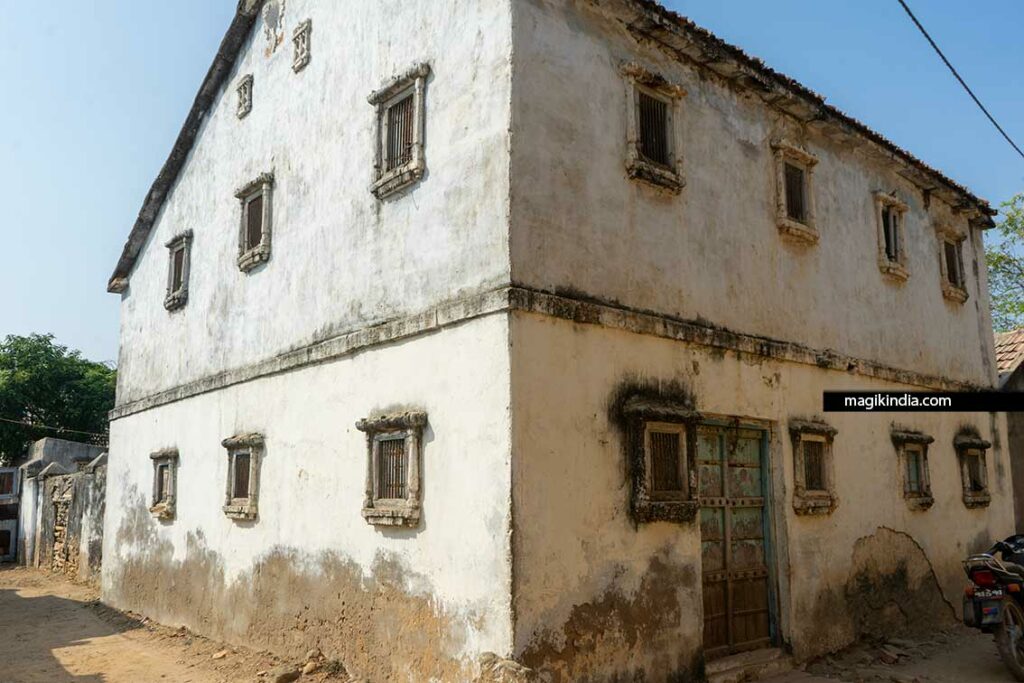
Historically, Tera was a “jagir” (fiefdom) given by the rulers of Kutch to members of their family. The stronghold of Tera then comprised more than forty villages and was one of the largest jagirs of Kutch. It was given to one of the sons of Rao Raydhan I during the reign of Deshalji I (1718-1741).
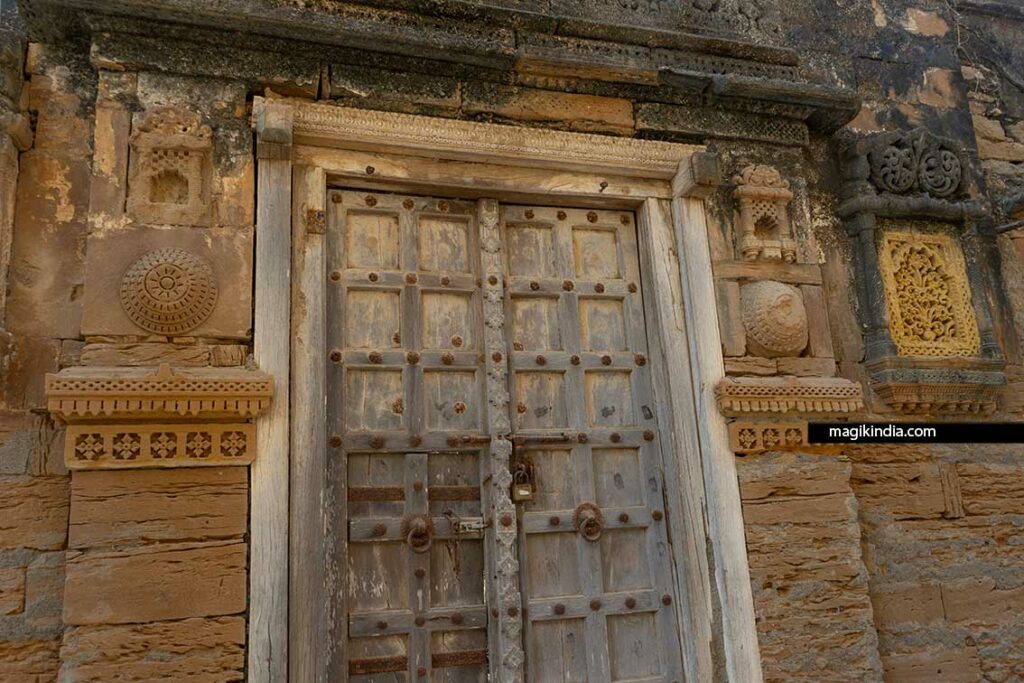
At the time, Tera was home to rich Hindu, Jain and Muslim merchants and artisans (Bhanushali, Koli, Harijan, Parghi, Luhana, Rajput, Brahmins to name a few), who contributed to its development.
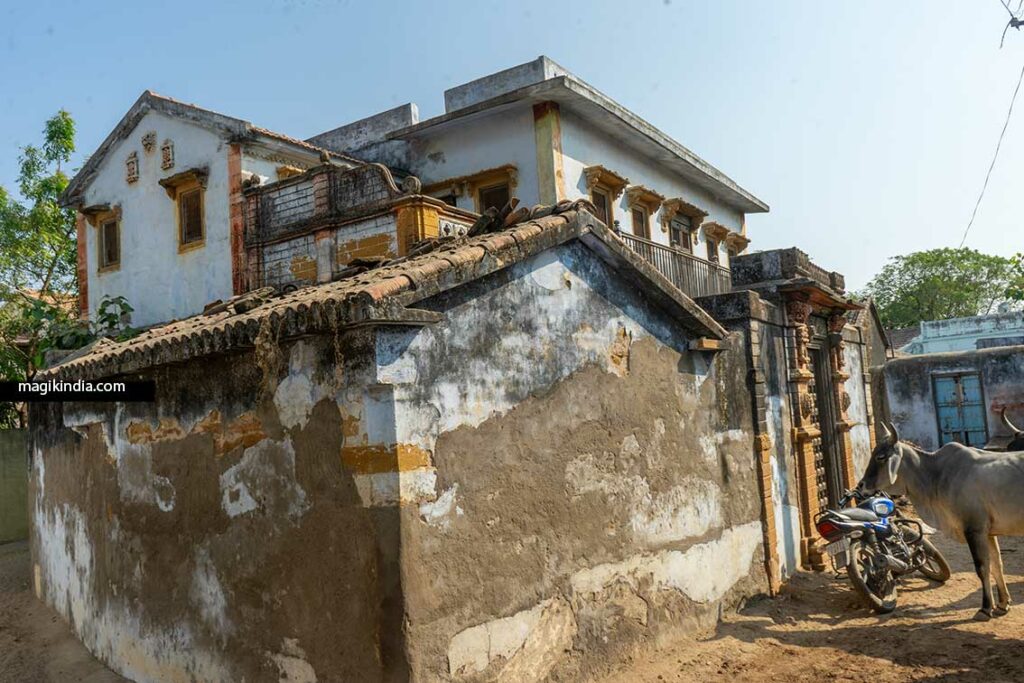
At present, the craft of bandhani (tie-and-dye) is still a major means of livelihood for many families in the village.
After thirty minutes of walking, we arrive in front of the entrance to the Tera fort which is visibly closed. There isn’t a soul around, it’s nap time and the temperature, even in December, is scorching. Only a man on a motorbike makes us understand that the fort is no longer open to the public, and has been for some time now. Through the half-open door, we actually understand that the place is abandoned, weeds have invaded the place.

The visit to the fort will therefore be limited to its imposing entrance gate flanked by two watchtowers on each side and a jharokha (corbelled balcony) placed above the wooden door.
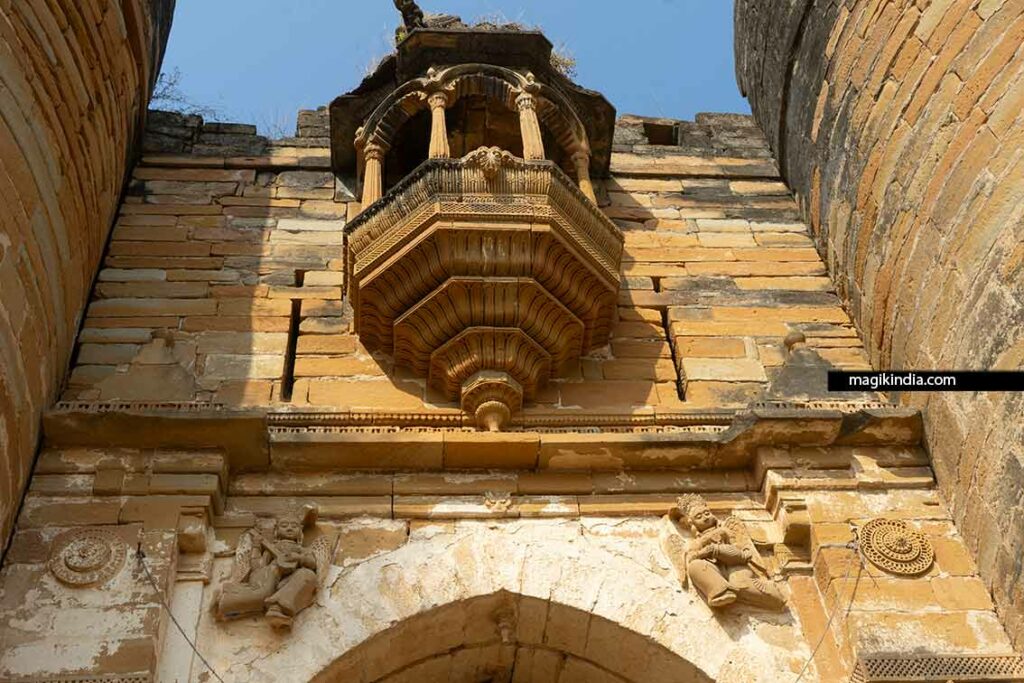
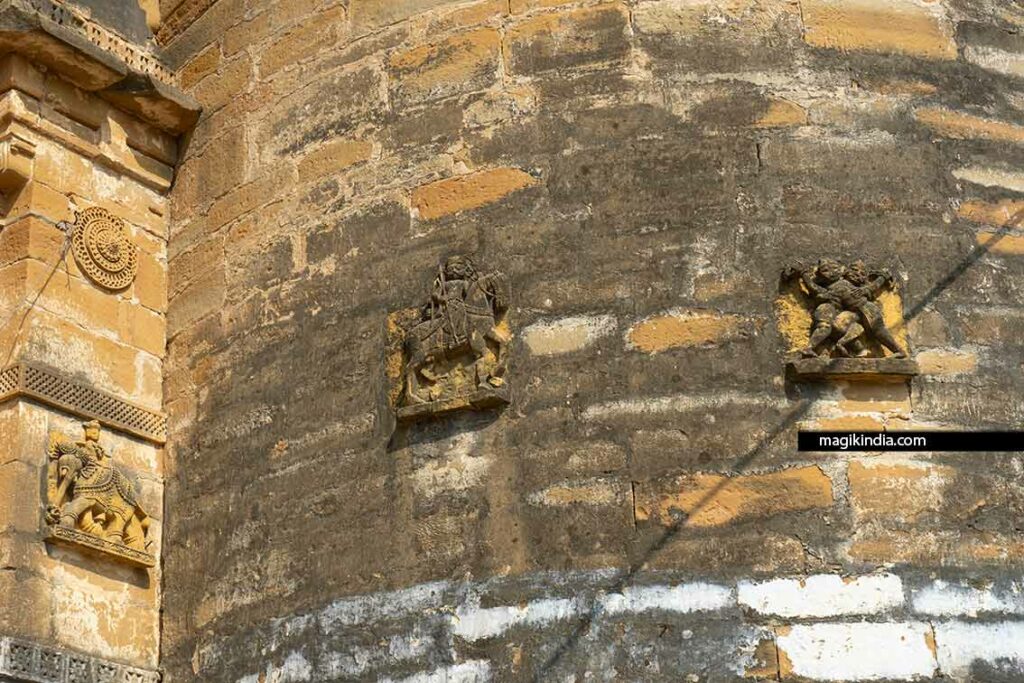
The fort was damaged for the first time during the independence revolt of the lord of Tera against the sovereign Lakhaji I (1741-1760). Rao Lakhaji I responded by sending his troops who destroyed part of the village and the fort. The latter was hit again during the earthquake of 1819. Its reconstruction was undertaken during the reign of Rao Deshalji II (1819–60).
The fort apparently includes a darbargarh decorated with frescoes from the epic Ramayana. Palace that we won’t see either.

We leave again along the same bumpy road. Along the way, we take a break on the banks of one of the village’s three artificial lakes. This is one of Tera’s particularities. The town has three interconnected lakes perfect examples of advanced engineering in water management. Rainwater coming from a surrounding hill is filtered through these three lakes.
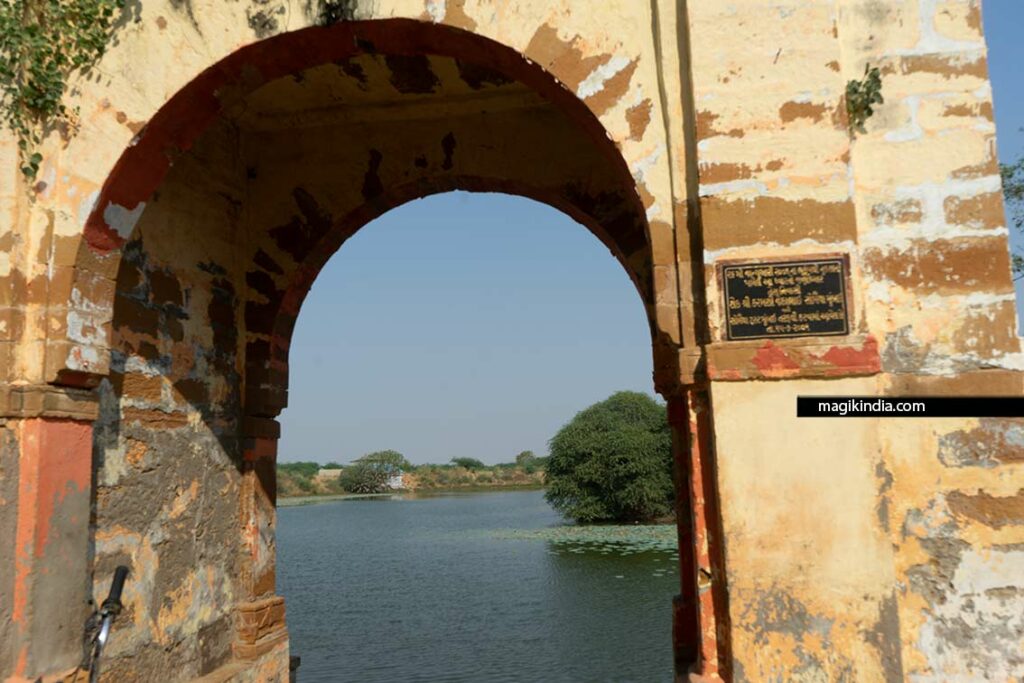
We continue driving and cross a large brick-red wall, a vestige of the village fortifications. Not far away is the gateway to the Tera derasar, a major pilgrimage site for the Jain community. This temple, along with those at Kothara, Naliya, Jakhau and Suthri, are known as “Moti Panchtirthi” (or five great abdasa pilgrimages). Nearly 50,000 faithful come to gather there each year.
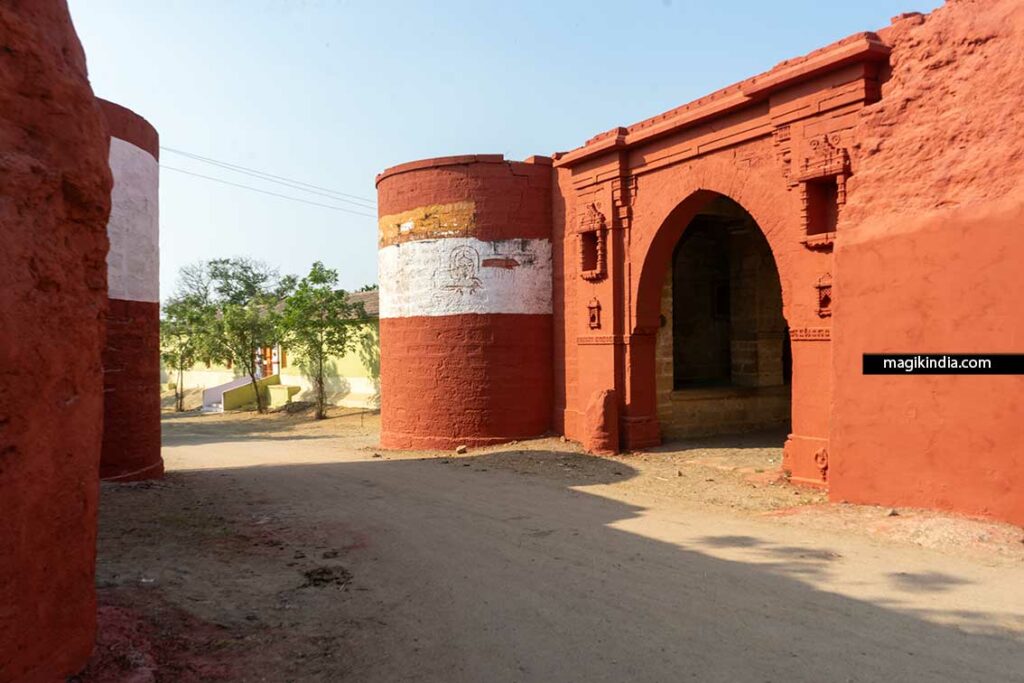
The first foundations of the temple date from the 17th century. Then, it was renovated in 1895, mainly by the Mistris of Kutch, a notable artisan community of the region.

Past the Dharmashala of the temple, where we had lunch, a long alley leads us to the derasar. As we arrived just before a major Jain festival, the temple had just been completely repainted, sporting bright colors.
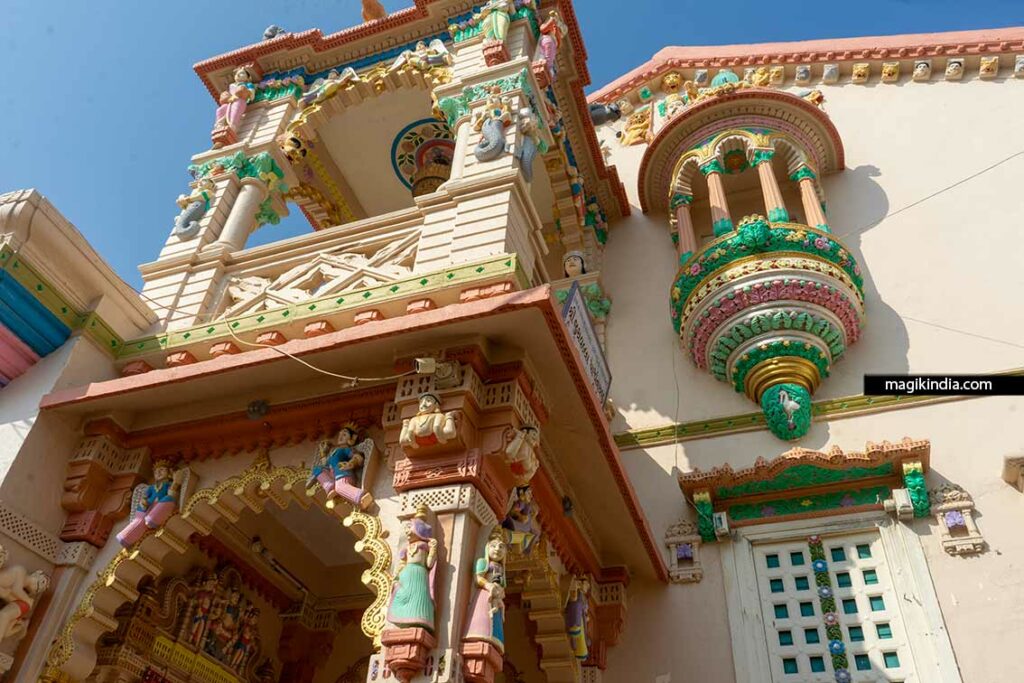
The entrance to the derasar is designed on the lines of a haveli with arches and jhakhoras. This temple complex has nine shikharas (peaked roofs), a main shrine and six other minor temples. The facades are richly decorated with Yaksha (spirits who guard the tirthankara), celestial dancers (apsaras) and musicians (gandharvas).
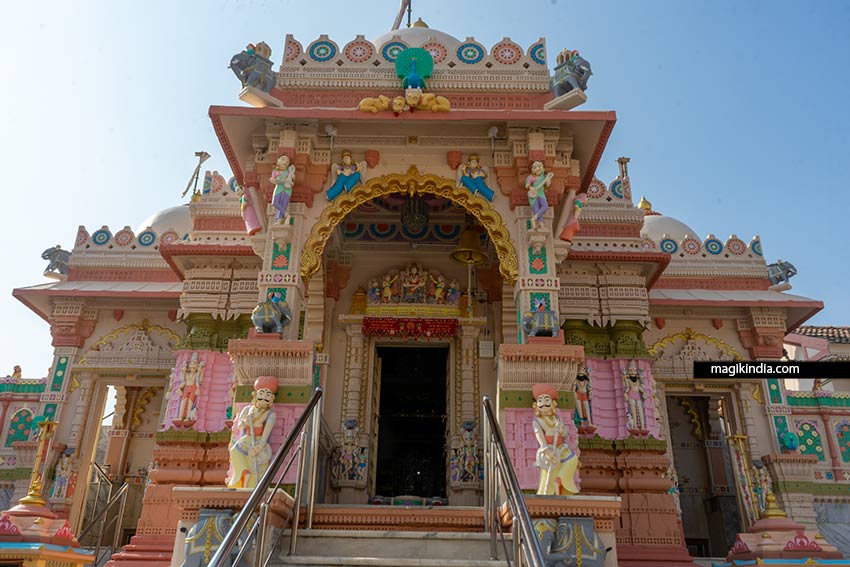
The garbhagriha of the temple houses the white marble idol of Shri Jirawala Parshwanath Prabhu. Parshwanath is considered by Jains as their twenty-third Tirthankara, an awakened Master of our times. Parshwanath is said to have been born in Varanasi in the 9th century BCE.
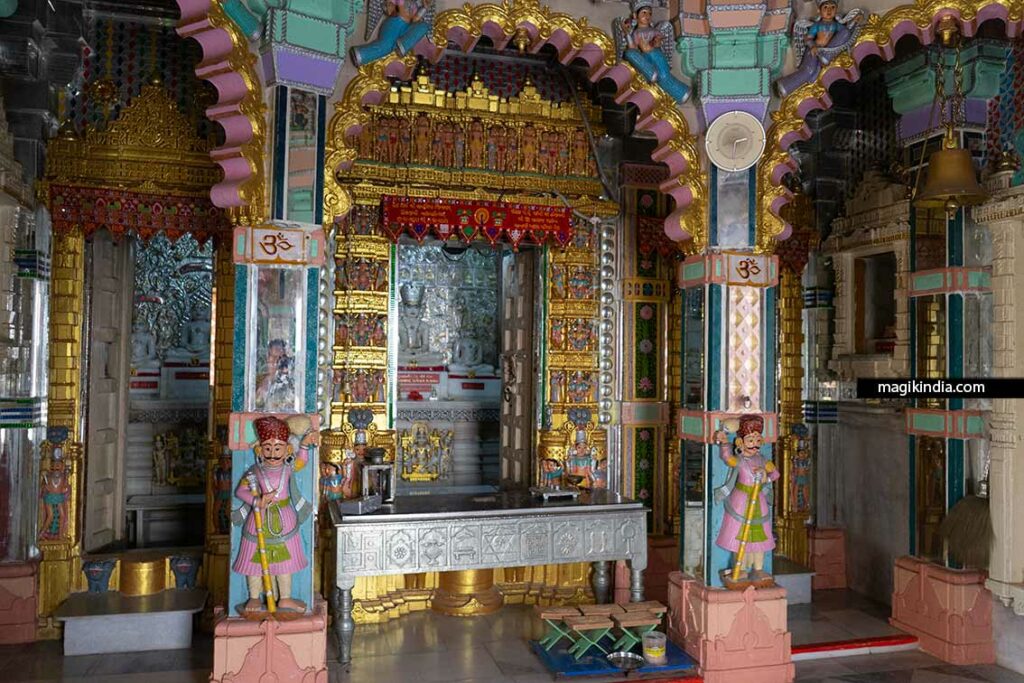
The idol is said to have been installed by King Sri Samprati. Samprati (224 – 215 BCE) was the fifth emperor of the Mauryan Empire. Grandson of the great Ashoka, he built thousands of Jain Derasars.
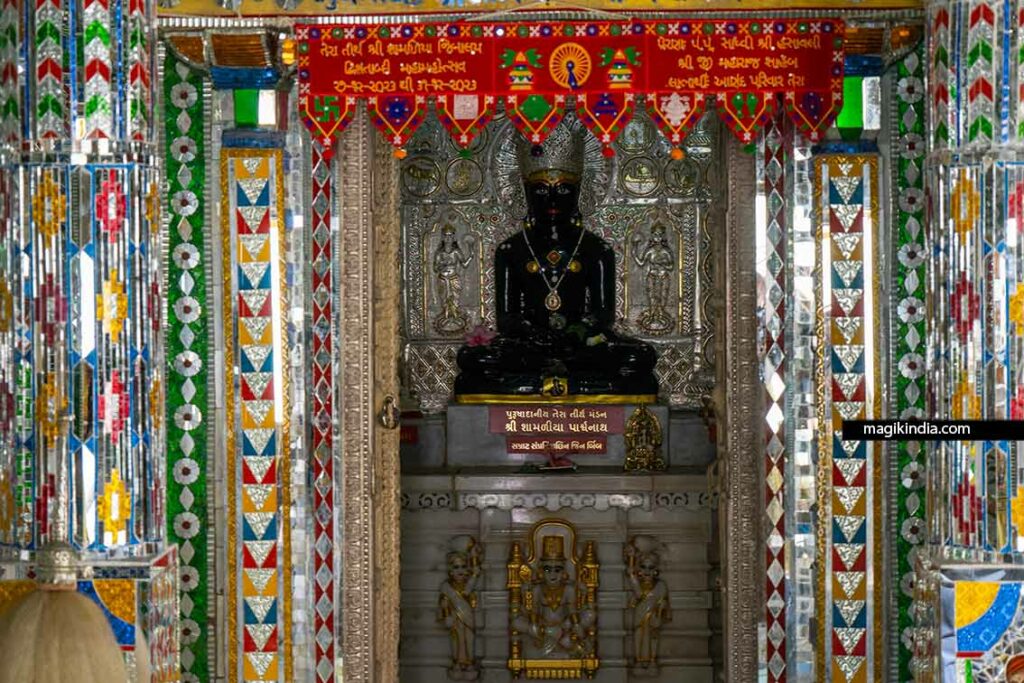
A temple of Shri Shyamala Parshwanath Bhagwan with a black schist statue is also present next to the main shrine

The Tera derasar is also known as “Kaanch Mandir” (glass temple), due to fabulous glass inlay work covering the entire interior of the temple.
Thus ends the visit to Tera, the continuation of the story of the “Moti Panchtirthi” temples in an upcoming issue of MAGIK INDIA… To be continued!
VISIT GUJARAT WITH US!
